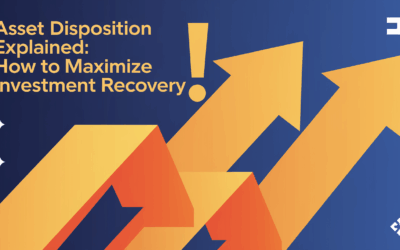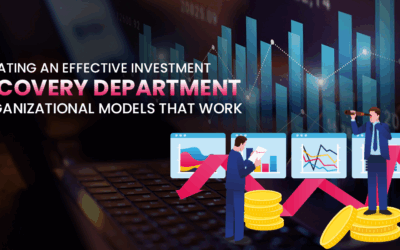Surplus Asset Disposition: Strategic Approaches to Asset Disposition for Revenue and Sustainability
In the business landscape, the strategic management of surplus assets has emerged as a pivotal area of focus for organizations across industries that are aiming to enhance operational efficiency, sustainability, and revenue generation. Especially, when global teams are facing supply chain shortages and premium prices for essential machinery, inventory, or materials, companies are missing out on a significant opportunity by overlooking the potential of their surplus assets.Let’s discuss more about surplus asset disposition and what strategies companies can adopt to shift their perspective on surplus assets.
Understanding Surplus Assets
Many organizations encounter the challenge of surplus assets, such as real estate, machinery, and inventory which are no longer in use. These assets, while having a potential value, can occupy your critical storage space, incur additional maintenance expenses, and pose a financial burden. Nevertheless, these surplus assets offer an opportunity for financial gain for your business by converting them into liquid capital.
When it comes to surplus assets, there are primarily two benefits to consider:
- Financial: Your surplus assets are a dormant source of capital and can be liquidated to generate revenue.
- Operational: When these assets are converted into capital, it can free up your space and resources, enabling you to focus on your key operations.
What Are Critical Considerations for Managing Surplus Assets
At any given moment, as much as 10% of the total assets within a large organization may be considered surplus. Additionally, the typical holding cost of maintaining surplus assets amounts to 20% of their recorded or fair market value.
Here are some basics that can help you better understand and manage surplus assets.
- Surplus assets vary widely, encompassing equipment, vehicles, machinery, IT assets, furniture, and properties. Identifying all surplus assets within an organization is crucial to assessing their monetization potential.
- There are various strategies for liquidating surplus assets, such as direct sales, purchases, auctions, or collaboration with asset management firms. You should carefully assess the distinct advantages and disadvantages of each approach.
- The market value of surplus assets can vary depending on demand, condition, and lifecycle stage. You need a comprehensive understanding of each asset’s market value to secure a reasonable price.
- Before the sale, some surplus assets might need refurbishment or repairs. You must consider these additional costs when calculating the asset’s net value and choosing the best strategy.
- You must implement a strategic plan for monetizing surplus assets. Ideally, this plan should identify prospective buyers, establish a sales timeline, and also determine the most effective sales method.
The Cost of Holding Surplus Assets
Here’s a closer look at the nuanced costs associated with surplus assets that underscore the need for a strategic approach to their disposition.
- Scrap value: Assets that are no longer operational can still have value as scrap. For instance, the components of a defunct machine might be sellable as scrap metal.
- Underused assets: Numerous businesses possess assets that aren’t being fully exploited, such as machinery, properties, or intellectual properties. Identifying and leveraging these assets can create extra value for the company.
- Resale potential: Assets that are surplus for one company can be valuable for another. Selling off these surplus assets can bring in additional capital.
- Tax advantages: Companies can also donate surplus assets to gain tax benefits. You can deduct the fair market value of the donated items from your taxes.
- Reducing environmental footprint: Recycling surplus assets can lessen your company’s environmental impact. This is not only beneficial for the environment but can also enhance your company’s reputation.
Identification and Evaluation of Surplus Assets
If you are struggling with identifying surplus assets, these tips can help.
- Warehouse storage: Understanding your current storage requirements is key. If your operations are streamlined and you do not have extra inventory, then additional storage space shouldn’t be necessary—unless there’s a launch of a new product line or project. Hence, the need for more storage can be a sign of surplus assets.
- Slow-moving inventory: Monitor your inventory for items with a low turnover rate. For example, if your operational needs call for equipment replacement every three years, but you have an existing stock with more on order, this indicates a surplus.
- Purchase history/financial records: Your organization’s financial records can serve as a valuable resource for identifying surplus items. You may review the history of equipment or MRO (Maintenance, Repair, and Operations) purchases and analyze expense reports to identify items eligible for tax deductions.
Choosing the Right Surplus Asset Disposition Method
After identifying and evaluating your surplus assets, the next step is to decide the best way to dispose of them. Your options might include selling them, donating them to charity, recycling, or even redeploying them within your own organization.
Some of the common asset disposition methods include the following.
- Redeployment
- Refurbishment/reconditioning
- Resale (auction, sealed bid, consignment, fixed price sale, and private treaty sale)
- Donation
- Disposal (scrapping)
The right choice depends on the type of asset and what makes the most sense financially and environmentally. For example, selling assets can bring in immediate revenue, while recycling or donating can improve your company’s sustainability reputation.
When You Don’t have the Right Strategy for Managing Your Surplus Assets
If you haven’t penned down your asset disposition strategy, you are missing out. Let us look at some of the undesirable outcomes.
Fragmented Management Approach
In many organizations, surplus assets are managed in a fragmented manner, that is, the decisions are made at the local level without considering broader organizational goals. This approach may result in the unplanned accumulation of surplus assets, leading to inefficient use of resources and space.
Financial Implications of Liquidation
Without a strategic plan for asset disposition, companies liquidate surplus assets, usually at a fraction of the market value. This practice not only incurs additional costs but also results in significantly lower financial returns. It comes as no surprise that not leveraging secondary marketplaces for asset sales is a common oversight.
Conflicting Stakeholder Priorities
Different priorities of internal stakeholders further complicate the management of surplus assets. Engineers, for example, may prefer to retain idle equipment for future use, overlooking storage costs, taxes, and depreciation. On the other hand, facility managers might go for the rapid disposal of surplus assets to free up valuable space, missing opportunities for higher returns on assets they consider scrap.
Holding onto Obsolete Equipment
Retaining obsolete or surplus items imposes direct costs on the organization. This practice can significantly impact the company’s bottom line, tying up capital in non-productive assets.
Missed Opportunities
Selling surplus assets to the lowest bidder or through local channels can limit the value of your assets. When organizations do not explore or tap into larger markets, they often miss out on the chance to maximize the return on their surplus assets.
By adopting an appropriate strategy, a company can shift its perspective on surplus assets from seeing them as a logistical or storage burden to recognizing them as a valuable source of additional working capital.
Strategic Approaches to Asset Disposition for Revenue and Sustainability
Here are some tactics and strategies that can help your company the best value from asset disposition, enhancing revenue and sustainability.
Get to Know the Market
Before you start negotiating, it’s crucial to really understand the market you’re dealing with. Do your homework to grasp how supply and demand are playing out, what’s trending, who your competitors are, and what buyers are looking for. This knowledge helps set realistic goals and steer towards the best deal possible.
Figure Out What Your Asset Is Worth
You should be aware of your assets’ market value, how much it has depreciated, and any other factors that might influence its worth. Don’t forget to consider its condition and any repair or maintenance costs. This helps you put a fair price on it and aim for the best deal.
Explore How to Best Dispose of Your Asset
There are different ways to dispose of your assets, and choosing the right one can help you maximize returns. You might sell, lease, or auction your assets based on what the market looks like and what you’re hoping to achieve. If the market’s looking good, selling might be your best bet. If it’s not, leasing could work better. And if competition is fierce, an auction might get you the best value.
Plan Your Negotiation Approach
Having a solid negotiation plan that matches your investment goals and the market situation is important. Your plan should take into account the value of your asset, potential buyers, and how you might dispose of it. It should also reflect how strong your position is and how you can secure terms that work for you.
Stay Open to Change
Being able to adapt is crucial when negotiating. Be ready to compromise and tweak your approach if it means getting closer to your desired outcome. And remember, it’s okay to back out if the deal isn’t aligning with your goals.
Final Words
In summary, effectively managing surplus assets is key to boost efficiency, sustainability, and revenue. By thoroughly understanding market dynamics, accurately assessing asset values, considering the right asset disposition method, and adopting a flexible negotiation strategy, you can turn surplus assets into valuable resources.



